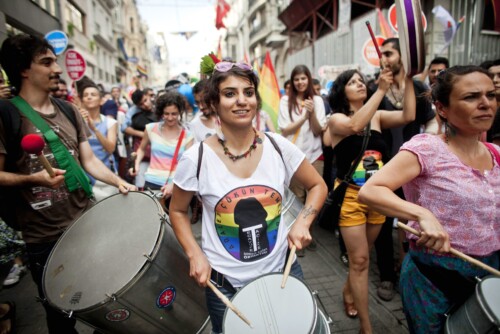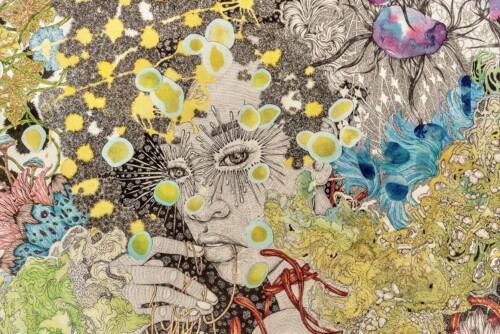Over the past decade or so, studies of Josephine Baker have shifted in emphasis from discussions of her life in general to analyses of the roles she played on stage and screen. This change from biography to performativity has brought new insights into the life of this celebrated musical star, conceptualizing her as a symbol of the black aesthetic, of jazz dance, of the African diaspora, or of the tensions of modernity as a whole.1 In this paper I hope to contribute to our views of Josephine Baker, performer, by exploring a specific theme that characterized many, if not most, of her characters. To put it bluntly, I wish to consider why the women Baker portrayed never got the guy; that is to say, never achieved success as romantic leads. Time and time again, when we see Baker on stage and screen, she is eating her heart out for a white Frenchman who generally remains completely ignorant of her desire, and who ends up instead with a white Frenchwoman, leaving Baker sad and alone. This constant failure contrasts strangely not only with Baker’s own love life, but also with her prominence as a music hall and movie star, since a key definition of such stardom, especially for women, is romantic success. So how can we explain the fact that the woman who not only exuded sexuality on stage but also generally got top billing, nonetheless lost out in the race for love?
The most obvious answer, of course, is the observation that French society in the interwar years was not willing to accept, let alone celebrate miscegenation, and that Baker’s performances respected powerful social norms. The fear of race mixing certainly had a lot to do with the limits on Baker as a performer, but I would contend it is not the entire story. For if one refused to countenance the possibility of love across the color line, then why make Josephine Baker a star at all, and in particular why encourage her to exhibit such demonstrative and alluring sensuality on stage and screen? Baker could never have performed such roles in contemporary America, and certainly never could have achieved stardom in doing so, thanks to that country’s strict taboo against interracial sex.2 The question is, therefore, why did French producers and audiences enjoy the sight of Baker flaunting her beauty and sexuality before their eyes yet refuse to accept the logical consequences of such appeal?
I believe that the answer to this question is found in the tensions of interwar French society and culture, in particular in the intersection of two phenomena that reflected the problematic legacies of the Great War. The first was the New Woman, the prospect of liberated young women who rejected prewar social conventions and set out to shape their own destinies. As a global phenomenon in France, it often symbolized not only freedom but also danger, unmoored sexual boundaries that could threaten society as a whole. To a certain extent, Josephine Baker’s prominence in France represented a triumph not just of primitivism and blackness but also of this new vision of femininity, and her performances illustrated both its positive and its negative sides. The second phenomenon was the new relationship between France and her overseas colonies. The war had created the beginnings of postcolonial society in metropolitan France, and during the interwar years the French people, to a much greater extent than before, wrestled with both the appeal and the Otherness of empire. In portraying a kind of colonial Everywoman, Baker’s characters mirrored the ambivalence many French felt toward their subjects and the imperial project in general.
In taking this approach, I wish to address two broader themes that arise when one considers the life and work of Josephine Baker. The first is the question of how we conceptualize black Europe and black European studies.3 Blacks in Europe belong both to the African diaspora and to European society, history, and culture; in foregrounding the latter relationship in this paper, I do not intend to neglect or undervalue the former. Rather, I ask another question: How do blacks and blackness reflect and shape the life of the “white continent” in general? The other theme is the relationship between gender, race, and colonialism. Feminist scholars have both challenged the traditional idea that white women bore primary responsibility for introducing racial segregation into Europe’s colonies, and also explored the ways in which not only European women but feminism itself at times contributed to the colonial project and to the racialization of the Other.4 Baker’s performances mirrored anxieties about the blurring of boundaries between métropole and colony at the same time as they asserted a modernist ideal of woman, and thus present an ideal site for exploring interactions of different types of alterity.
Such broader reflections seem to take us far from the tragedies of unrequited love. Yet ultimately the loss was not Baker’s, but that of a society unable to address successfully the contradictions of the world it had created. Interwar France may have made Josephine Baker a star, but it could not portray her simply as a human being who loved and was loved in return.
- Mae G. Henderson, “Josephine Baker and La Revue Nègre: From Ethnography to Performance,” Text and Performance Quarterly 23, no. 2 (April 2003); Karen C.C. Dalton and Henry Louis Gates Jr., “Josephine Baker and Paul Colin: African American Dance Seen Through Parisian Eyes,” Critical Inquiry 24, no. 4 (Summer 1998); Elizabeth Ezra, The Colonial Unconscious: Race and Culture in Interwar France (Ithaca: Cornell University Press, 2000); Jennifer Boittin, “Soleil Noir: Race, Gender and Colonialism in Interwar Paris,” PhD dissertation, Yale University, 2005; Samir Dayal, “Blackness as Symptom: Josephine Baker and European Identity,” in Heike Raphael-Hernandez, Blackening Europe: The African American Presence (London: Routledge, 2004). [↩]
- Jacqueline N. Stewart, Migrating to the Movies: Cinema and Black Urban Modernity (Berkeley and Los Angeles: University of California Press, 2005); Jane M. Gaines, Fire and Desire: Mixed-Race Movies in the Silent Era (Chicago: University of Chicago Press, 2001). [↩]
- On the history of black Europe, see in particular the pioneering work of Allison Blakely: “European Dimensions of the African Diaspora: The Definition of a Black Racial Identity,” in Darlene Clark Hine and Jacqueline McLeod, eds. Crossing Boundaries: Comparative History of Black People in Diaspora (Bloomington and Indianapolis: Indiana University Press, 1999); and Blacks in the Dutch World: The Evolution of Racial Imagery in a Modern Society (Bloomington and Indianapolis: Indiana University Press, 1994). See also Paul Gilroy, The Black Atlantic: Modernity and Double Consciousness (Cambridge, MA: Harvard University Press, 1993); Tyler Stovall, Paris Noir: African Americans in the City of Light (Boston: Houghton-Mifflin, 1996); Brent Hayes Edwards, Practicing Diaspora: Literature, Translation, and the Rise of Black Internationalism (Cambridge, MA: Harvard University Press, 2003). [↩]
- Ann L. Stoler, Carnal Knowledge and Imperial Power: Race and the Intimate in Colonial Rule (Berkeley and Los Angeles: University of California Press, 2002); Nupur Chaudhuri and Margaret Strobel, Western Women and Imperialism: Complicity and Resistance (Bloomington: Indiana University Press, 1992); Joan Scott, Only Paradoxes to Offer: French Feminists and the Rights of Man (Cambridge, MA: Harvard University Press, 1996); Laura E. Donaldson, Decolonizing Feminisms: Race, Gender, and Empire Building (Chapel Hill: University of North Carolina Press, 1992); Susan Pedersen, “National Bodies, Unspeakable Acts: The Sexual Politics of Colonial Policy Making,” Journal of Modern History 63, no. 4 (December 1991). [↩]




